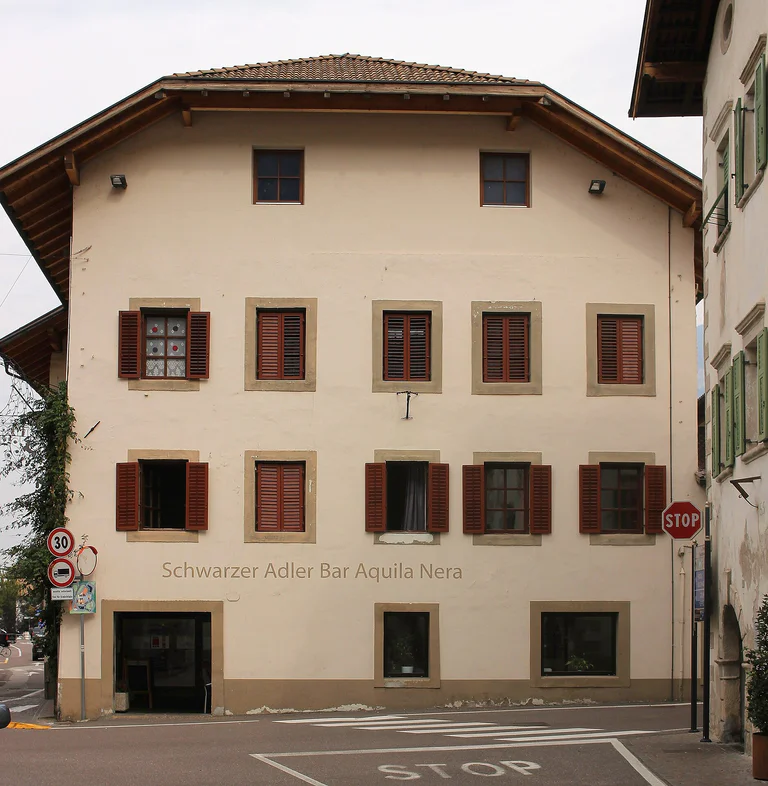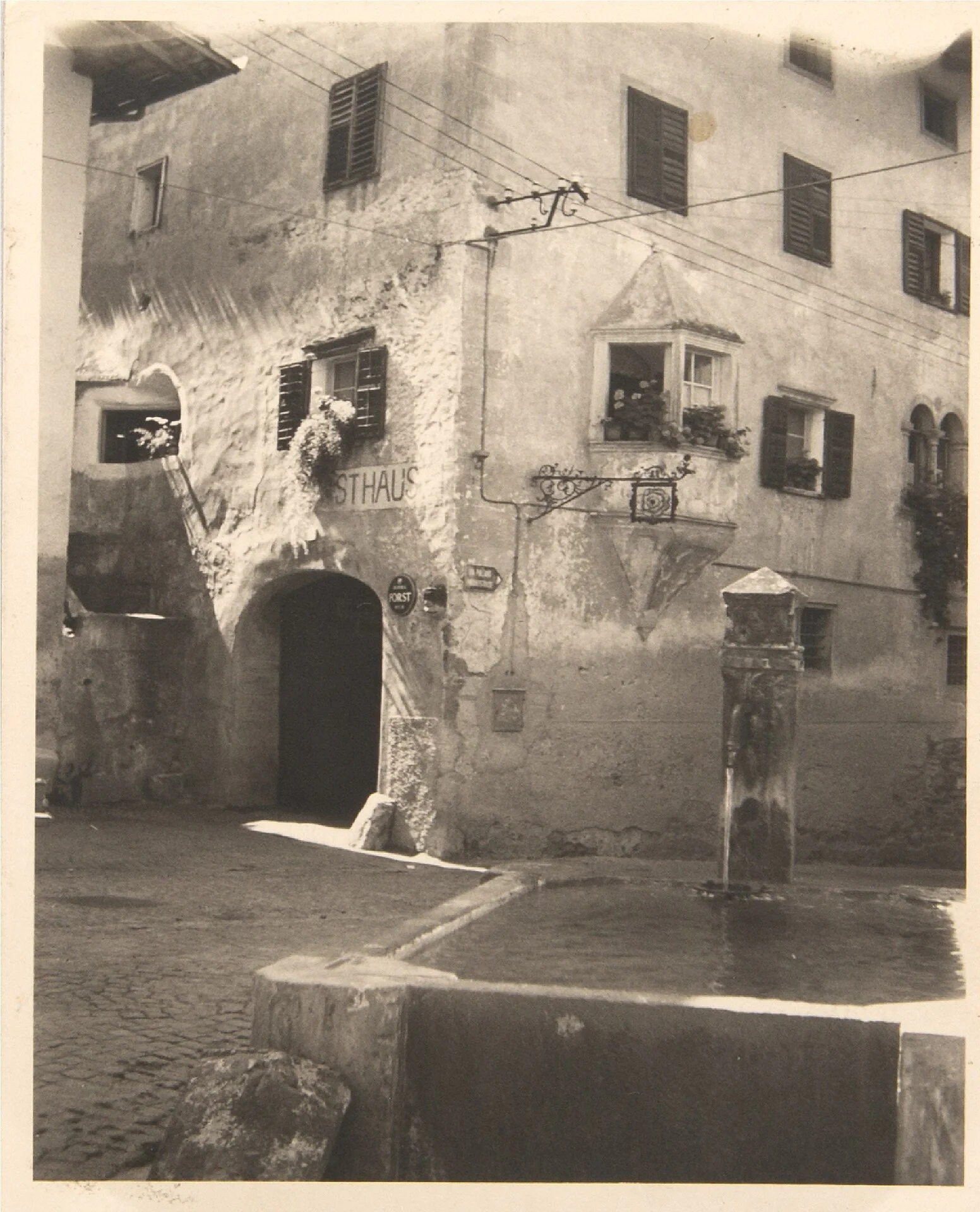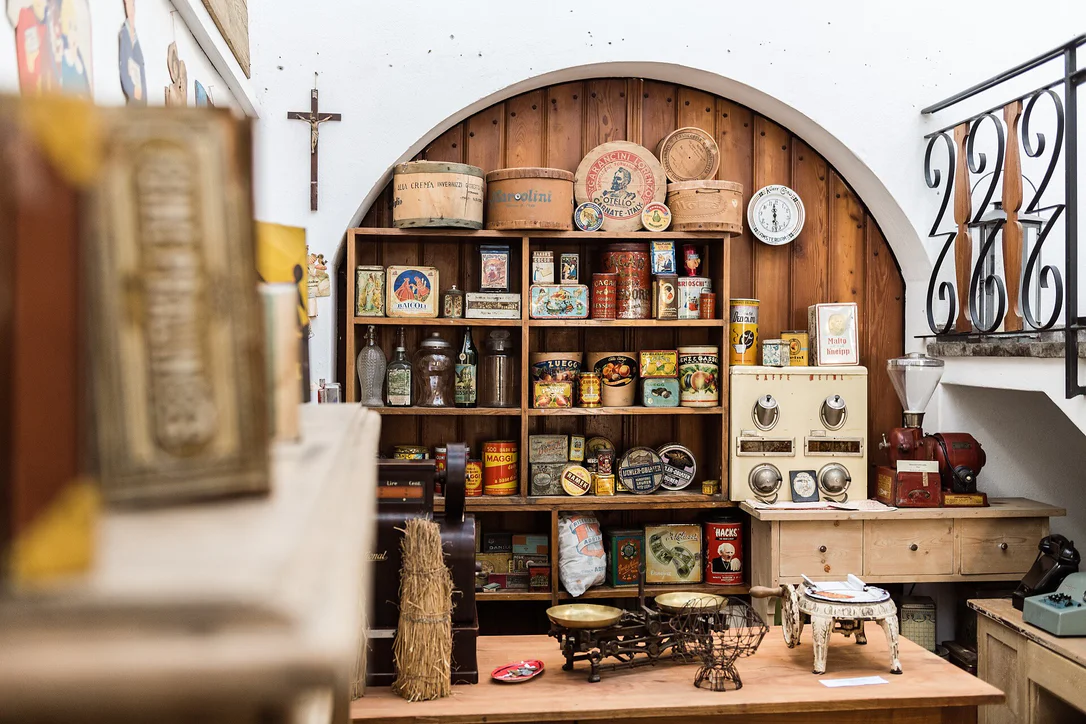The “Schwarzer Adler'' Inn dates back to the 15th century. It was the largest and most solid inn in Salorno/Salurn, located at the most important crossroads of the time. It was equipped with a parlour that exerted great attraction on passers-by and villagers and knew how to maintain itself as an inn best and longest. This large inn, once owned by various noble families, later fell to merchants and the bourgeoisie and was eventually divided among various owners: in 1500 it was the Rölls, 1600-1680 the Lansers, between 1680 and 1700 Andrä Nagele, who sold his property to Peter Tolloy, who in turn ceded it to Baron J. F. von Coret. In 1801 the inn was acquired by the Tschurtschenthaler family, who sold it in 1825 to Anton von Gelmini and Anton von Vilas. In 1833 the inn fell into the hands of the Petermair family. With the construction of the railway (1859), however, there was a drastic decline in the number of guests. From that time on, the inn's activities were almost exclusively limited to guests from the village.
Remarkable is the magnificent black eagle made of wrought iron, which has been preserved to this day in the same place above the old post road and reminds us of the old name and the centuries-old hospitality business that was practised there. The "Black Eagle" proved to be the most frequented inn in the village at that time.























































